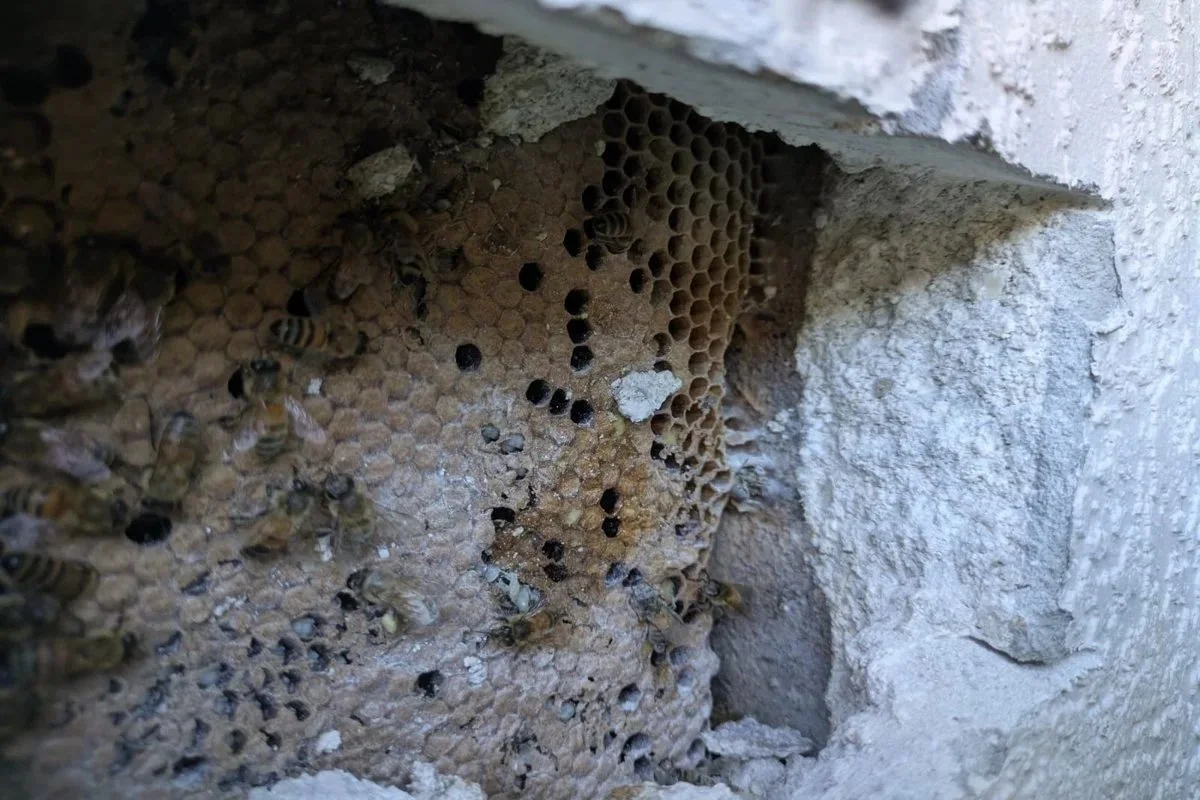How Bee Removal Prevents Roof and Wall Damage.
When you see bees buzzing around your home, it might seem harmless at first. But if they’ve built a hive inside your roof, attic, or walls, the damage they can cause over time is no small issue. Bees are essential to our environment, but when they settle inside your home, they can create structural problems, attract other pests, and leave behind a mess that’s expensive to repair.
The good news is that professional bee removal doesn’t just solve the immediate issue—it also prevents long-term damage to your property. Here’s why calling an expert is always the smartest decision for both your home and the bees.
🐝 Why Bees Build Hives in Roofs and Walls
Bees look for dark, protected spaces to build their hives, and homes often provide the perfect shelter. Gaps in siding, roof vents, cracks in soffits, and damaged shingles give bees easy entry. Once they find a safe space, they start building their hive quickly.
A beehive inside your walls or attic isn’t a temporary situation—bees often stay put for months or even years if left undisturbed. Over time, the hive grows larger, causing more structural stress. Worse, even if bees are removed, but the hive isn’t cleaned out properly, it can attract new swarms in the future.
🏚️ The Hidden Dangers of a Hive Inside Your Home
Leaving a bee infestation untreated can lead to significant and costly damage:
1. Structural Weakness
Beekeeper removing a hive to protect home walls.
Honeycomb is surprisingly heavy, and as the hive grows, it puts pressure on walls, ceilings, and roof beams. The wax and honey can seep into wood or drywall, weakening these materials and causing soft spots, sagging ceilings, or cracks.
2. Stains and Leaks
Honey is sticky and can seep through walls, creating dark stains. Over time, this attracts moisture, which can worsen structural issues and lead to further decay.
3. Mold and Mildew Growth
The constant presence of honey and wax increases humidity in wall cavities. This moisture creates the perfect environment for mold and mildew, leading to health risks and expensive mold remediation.
4. Attraction of Other Pests
Abandoned or untreated hives are a magnet for ants, moths, roaches, and rodents looking for an easy food source. What starts as a bee problem can turn into multiple pest infestations?
5. Electrical Risks
If bees nest near wiring, they may chew through insulation, creating a fire hazard. Electrical repairs combined with hive cleanup can become a costly project if you delay removal.
🛠️ How Professional Bee Removal Prevents Damage
Calling a bee removal expert is the best way to protect your home and avoid future infestations. Here’s how professionals handle the situation:
Safe, Humane Relocation
Rather than using harmful chemicals, professionals remove bees alive and relocate them to an environment where they can thrive. This eco-friendly approach protects bees while keeping your home safe.
Full Hive Removal
Simply getting rid of the bees isn’t enough. Experts remove the entire hive—including all honey, wax, and debris—so your walls and roof stay clean, dry, and pest-free.
Damage Assessment and Repairs
Once the hive is removed, professionals check for structural damage and help seal entry points. By repairing access gaps, you prevent other bees from moving in.
Eco-Friendly Prevention
Professional services use methods that protect your property without harming pollinators. Unlike chemical sprays, which can stain walls or harm other wildlife, humane bee removal is safer for your family and the environment.
💸 Why Quick Bee Removal Saves You Money
Safe bee removal from a home wall.
Many homeowners hesitate to call a bee removal service because of cost concerns. However, waiting often leads to far more expensive repairs. A hive left inside your roof or walls can cause damage to drywall, insulation, roofing materials, and wiring. Removing bees early is always more affordable than repairing rotted wood, replacing sections of the roof, or paying for mold cleanup.
By acting quickly, you’ll save yourself from thousands of dollars in potential home repairs and ensure the bees are relocated safely.
🔍 Signs You May Have a Hive
Catching a bee infestation early is key to avoiding major damage. Watch for these warning signs:
Buzzing or humming sounds inside walls or ceilings
Bees flying in and out of a single entry point
Dark stains on walls or ceilings caused by honey seepage
Soft or sagging spots in the roof or drywall
A sweet, musty smell inside the home
If you notice any of these signs, contact a bee removal service immediately before the hive grows larger.
🏡 How to Prevent Future Infestations
Once the bees are gone, it’s important to take steps to keep them from coming back:
Seal gaps, cracks, and openings around siding, soffits, and vents.
Replace broken roof shingles and damaged flashing.
Install vent screens to block bee entry points.
Trim tree branches near your roofline to reduce easy access.
Schedule regular inspections to catch early signs of bees or other pests.
Prevention not only protects your home but also reduces the risk of harming bees by having to remove them again.
🌿 The Importance of Humane Bee Removal
Bees are essential for pollination and food production, so killing them should never be the first option. Humane bee removal ensures that bees are safely relocated instead of exterminated. This approach benefits both homeowners and the environment.
Extermination often leaves pheromone trails that attract new swarms to the same spot, creating a recurring problem. Live removal eliminates this risk while supporting bee populations.
✅ Bees are vital to the environment, but a hive inside your roof or walls can lead to costly and dangerous damage if ignored. Honey, wax, and moisture can weaken your home’s structure, attract pests, and create health hazards. The best way to protect your property is to call a professional bee removal service at the first sign of a hive.
By choosing live bee relocation and full hive cleanup, you’re not only saving your home from damage—you’re helping preserve a critical species. Act quickly, and you’ll protect your property, your family, and the bees.


